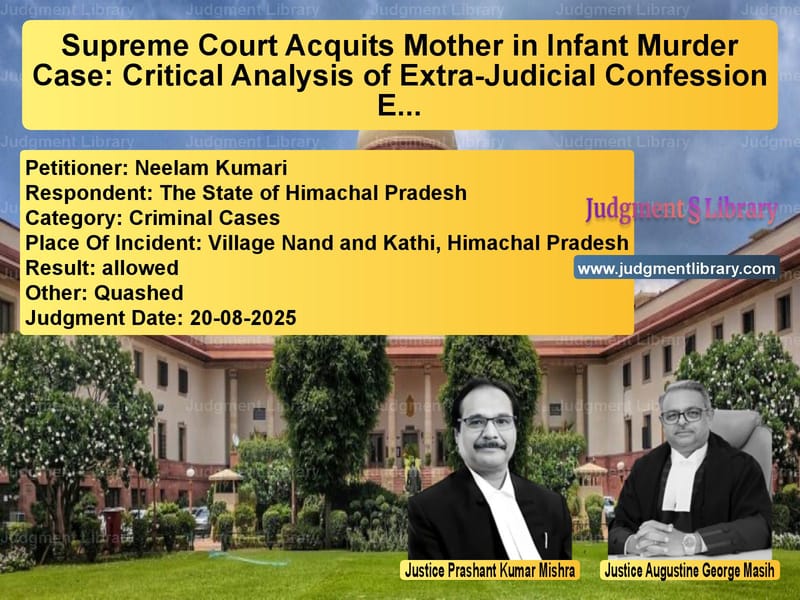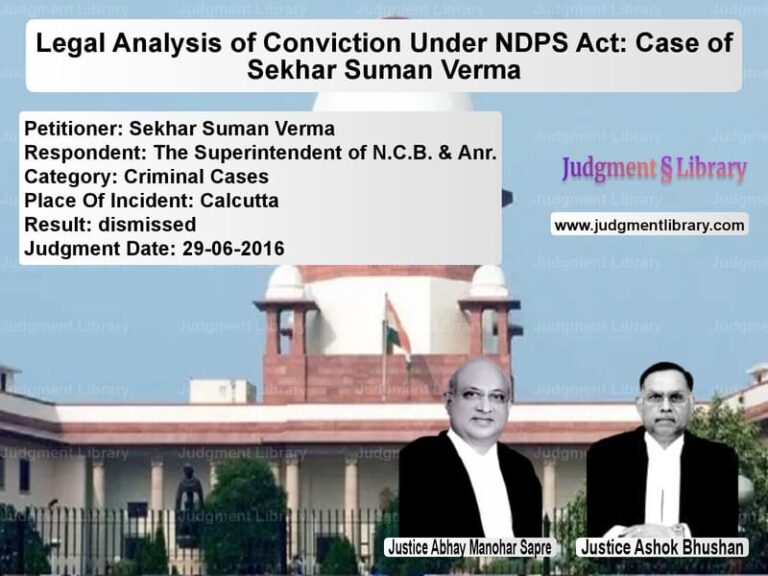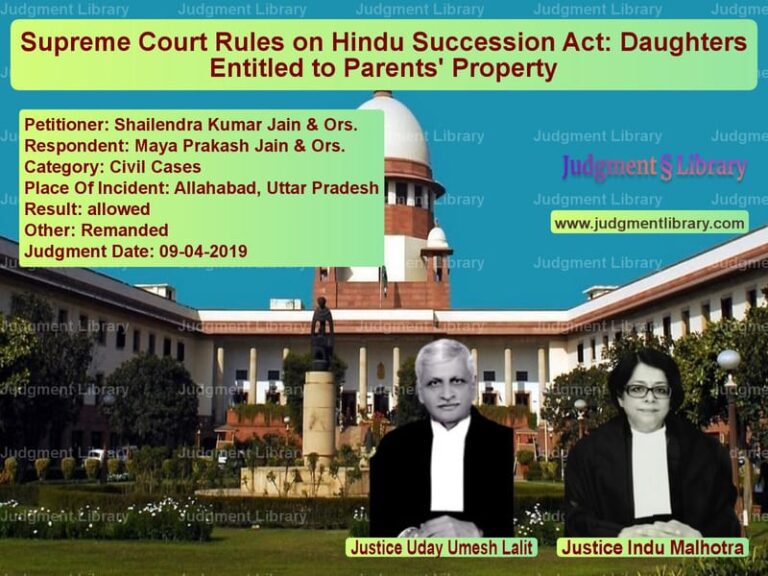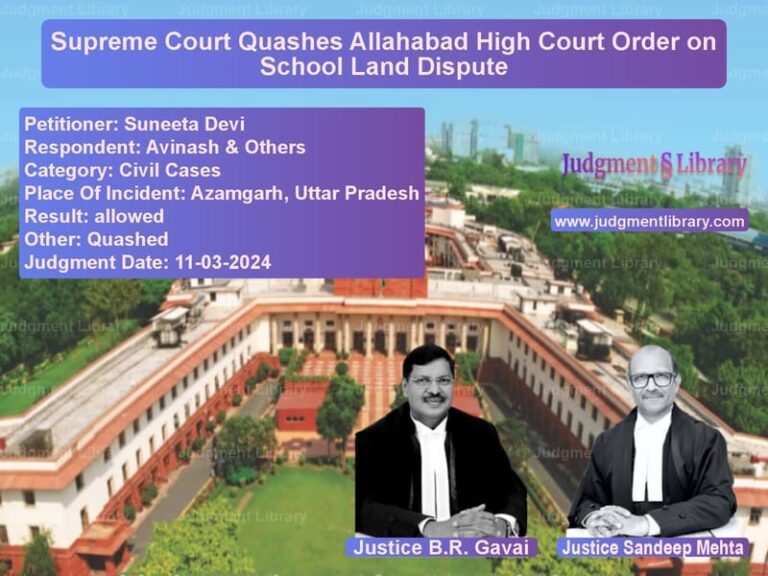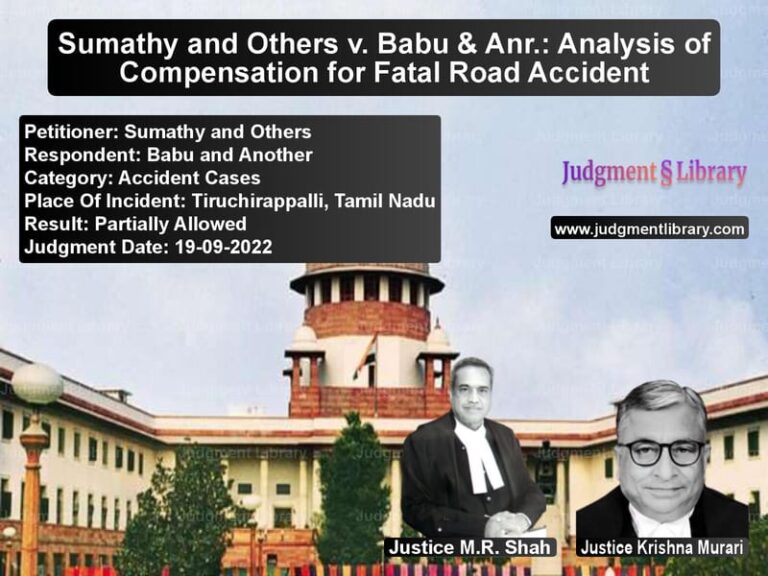Supreme Court Acquits Mother in Infant Murder Case: Critical Analysis of Extra-Judicial Confession Evidence
In a landmark judgment that underscores the importance of rigorous evidentiary standards in criminal cases, the Supreme Court of India has acquitted a mother who had been convicted for the murder of her infant son. The case, which had traveled through multiple judicial levels over nearly two decades, highlights the critical weaknesses that can undermine criminal prosecutions based primarily on extra-judicial confessions and circumstantial evidence.
The tragic case began in December 2006 when an infant boy was found dead in Himachal Pradesh. Neelam Kumari, the child’s mother, was subsequently convicted under Section 302 of the Indian Penal Code for murder and sentenced to life imprisonment by the Trial Court. The Himachal Pradesh High Court had affirmed this conviction in 2009, leading to the final appeal before the Supreme Court.
The prosecution’s case rested heavily on alleged extra-judicial confessions made by the appellant to her husband Nikku Ram, Ward Member Krishan Lal, Pradhan Bhagwanti Devi, and Umrawati. According to the prosecution, Neelam Kumari had confessed to strangling her own child with a dupatta. The forensic report indicated that blood and human skin tissues were found on the dupatta, which the appellant had allegedly produced during interrogation.
The Legal Framework for Extra-Judicial Confessions
The Supreme Court began its analysis by examining the legal principles governing extra-judicial confessions. The Court emphasized that “extra-judicial confessions are generally considered weak evidence and should be corroborated by other, independent evidence.” Quoting from its earlier decision in Sahadevan & Anr. vs. State of Tamil Nadu, the Court reiterated: “12. …It is a case based upon circumstantial evidence. In case of circumstantial evidence, the onus lies upon the prosecution to prove the complete chain of events which shall undoubtedly point towards the guilt of the accused. Furthermore, in case of circumstantial evidence, where the prosecution relies upon an extra-judicial confession, the court has to examine the same with a greater degree of care and caution. It is a settled principle of criminal jurisprudence that extra-judicial confession is a weak piece of evidence. Wherever the Court, upon due appreciation of the entire prosecution evidence, intends to base a conviction on an extra-judicial confession, it must ensure that the same inspires confidence and is corroborated by other prosecution evidence. If, however, the extra-judicial confession suffers from material discrepancies or inherent improbabilities and does not appear to be cogent as per the prosecution version, it may be difficult for the court to base a conviction on such a confession. In such circumstances, the court would be fully justified in ruling such evidence out of consideration.”
The Court further referenced Chandrapal vs. State of Chhattisgarh, which had specifically held that “11. …However, this court has consistently held that an extra judicial confession is a weak kind of evidence and unless it inspires confidence or is fully corroborated by some other evidence of clinching nature, ordinarily conviction for the offence of murder should not be made only on the evidence of extra judicial confession…”
Critical Gaps in the Prosecution’s Case
The Supreme Court identified multiple critical gaps in the prosecution’s case. First, the Court noted that during the appellant’s examination under Section 313 of the Code of Criminal Procedure, she had denied making any extra-judicial confessions and provided an alternative explanation. She stated that when she found her child unresponsive in the morning, she started crying, and two women came to enquire. Significantly, one of these women, Sita Devi, who was allegedly a non-interested witness, was never examined by the prosecution.
The Court observed that “While the prosecution is not required to examine every possible witness, it must ensure that those witnesses essential to substantiate the truth are produced before the Court. Failure to do so without adequate explanation, may cast doubt on the prosecution’s case.”
The Golden Principles of Circumstantial Evidence
Beyond the extra-judicial confessions, the Court evaluated the circumstantial evidence against the appellant using the five ‘golden principles’ established in Hanumant vs. The State of Madhya Pradesh and crystallized in Sharad Birdhi Chand Sarda vs. State of Maharashtra. These principles require that: the circumstances must be fully established; the facts should be consistent only with the hypothesis of guilt; the circumstances should be conclusive; they should exclude every possible hypothesis except guilt; and there must be a complete chain of evidence showing that the act must have been done by the accused.
Applying these principles, the Court found significant weaknesses in the prosecution’s case. The appellant’s whereabouts during the critical period were not conclusively established. Her husband Nikku Ram admitted that he did not find the appellant and child at their house when he returned around 8:30 pm on December 8, 2006, and that the appellant called him the following morning to enquire where he had spent the previous night. The Court noted that “husband and wife did not encounter each other the night of 8th December, 2006.” Importantly, the husband admitted that the house in village Katli was double-storeyed, meaning the appellant could have been present there overnight without his knowledge.
Medical Evidence and Timeline Issues
The medical evidence presented another major problem for the prosecution. The Court noted that “The medical evidence suggests a significant gap between the alleged time of strangulation and the medical examination, with approximately two hours passing before death and eight hours before examination. This extended timeline introduces considerable uncertainty about when and how the fatal injuries occurred.”
The Court powerfully reasoned that “during this time gap, numerous events could have transpired, and various individuals other than the appellant could have had access to the child. In our view, this intervening period weakens the prosecution’s ability to establish an unbroken chain of events leading inexorably to the conclusion of the appellant’s guilt.”
Problems with the Alleged Murder Weapon
The recovery and treatment of the alleged murder weapon—the green dupatta—raised serious concerns. The Court noted that it was a commonly available dupatta, and the appellant had strenuously denied producing it during her judicial statement. More importantly, “the dupatta was never shown to Dr. Sunita Sood (PW-10) who conducted the postmortem examination. This creates a fundamental disconnect in the chain of evidence. It seems obvious that the doctor who determined the cause of death must be given the opportunity to assess whether the alleged murder weapon was consistent with the injuries observed on the deceased child.”
Regarding the forensic findings, the Court observed that “while the forensic examination reportedly found blood stains and human skin tissues on the dupatta, there is no evidence establishing that these materials belonged to the deceased child himself. Therefore, their presence on the dupatta cannot be conclusively linked to the offence. Common items of clothing may contain various biological materials from everyday use, and without specific identification, such evidence remains ambiguous at best.”
Conduct Inconsistent with Guilt
The Court found the appellant’s subsequent conduct difficult to reconcile with guilt. Rather than attempting to conceal the crime or flee, she proceeded to seek medical assistance for the child. Specifically, she took the child to their tenant, Dr. Sandesh Guleria. The Court reasoned that “Logically, such behaviour is more consistent with innocence than guilt. At the very least, represents a significant inconsistency in the prosecution’s narrative. It is difficult to reconcile that the appellant was cold-blooded enough to strangle her own child but urgently sought medical help for that child shortly thereafter.”
Absence of Convincing Motive
The prosecution had failed to establish any convincing motive for the appellant to murder her own child. The suggestion that she killed her child because her husband visited village Katli for the last rites of his recently deceased father was found to defy logic, especially since she herself had visited village Katli along with him and their child on December 8, 2006. The Court emphasized that “such an extreme act runs completely contrary to the natural instinct of a mother of an infant child.”
Quoting from Anwar Ali & Anr. vs. The State of Himachal Pradesh, the Court noted: “9. Now so far as the submission on behalf of the accused that in the present case the prosecution has failed to establish and prove the motive and therefore the accused deserves acquittal is concerned, it is true that the absence of proving the motive cannot be a ground to reject the prosecution case. It is also true and as held by this Court in the case of Suresh Chandra Bahri v. State of Bihar 1995 Supp (1) SCC 80 that if motive is proved that would supply a link in the chain of circumstantial evidence but the absence thereof cannot be a ground to reject the prosecution case. However, at the same time, as observed by this Court in the case of Babu (supra), absence of motive in a case depending on circumstantial evidence is a factor that weighs in favour of the accused.”
Conclusion and Acquittal
Based on its comprehensive analysis, the Supreme Court concluded that “the prosecution has failed to establish the guilt of the appellant beyond reasonable doubt. The alleged extra-judicial confessions suffer from serious infirmities and cannot be relied upon. The circumstantial evidence, too, does not form a complete chain conclusively pointing towards the guilt of the appellant.”
The Court allowed the appeal, set aside the conviction and sentence under Section 302 of the IPC, and acquitted the appellant of the offence alleged against her. Since the appellant was already on bail, the Court directed that she be discharged from her bail bonds.
This judgment serves as a powerful reminder of the fundamental principles of criminal jurisprudence—that conviction requires proof beyond reasonable doubt, that extra-judicial confessions are inherently weak evidence requiring careful scrutiny, and that circumstantial evidence must form a complete chain excluding every hypothesis of innocence. The Court’s meticulous examination of each piece of evidence demonstrates the rigorous standards that must be met before depriving a person of their liberty, particularly in cases involving the most serious of criminal charges.
Petitioner Name: Neelam Kumari.Respondent Name: The State of Himachal Pradesh.Judgment By: Justice Prashant Kumar Mishra, Justice Augustine George Masih.Place Of Incident: Village Nand and Kathi, Himachal Pradesh.Judgment Date: 20-08-2025.Result: allowed.
Don’t miss out on the full details! Download the complete judgment in PDF format below and gain valuable insights instantly!
Download Judgment: neelam-kumari-vs-the-state-of-himacha-supreme-court-of-india-judgment-dated-20-08-2025.pdf
Directly Download Judgment: Directly download this Judgment
See all petitions in Murder Cases
See all petitions in Bail and Anticipatory Bail
See all petitions in Judgment by Prashant Kumar Mishra
See all petitions in Judgment by Augustine George Masih
See all petitions in allowed
See all petitions in Quashed
See all petitions in supreme court of India judgments August 2025
See all petitions in 2025 judgments
See all posts in Criminal Cases Category
See all allowed petitions in Criminal Cases Category
See all Dismissed petitions in Criminal Cases Category
See all partially allowed petitions in Criminal Cases Category

